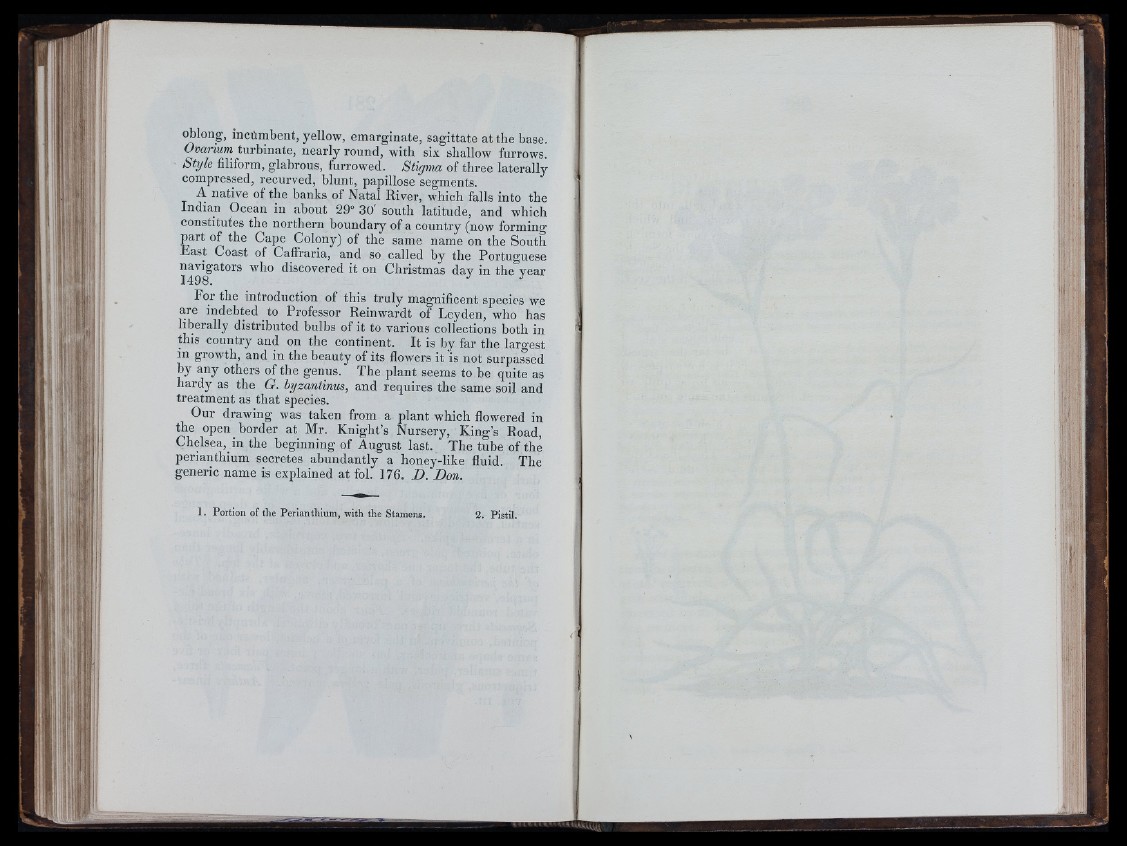
I.:i
I I I
^ lo iig , incilmbent, yellow, emarginate, sagittate at the base.
Ovarium turbinate, nearly round, with six shallow furrows.
Style filiform, glabrous, furrowed. Stigma of three laterally
compressed, recurved, blunt, papillose segments.
A native of the banks of Natal River, which falls into the
Indian Ocean in about 29° 30' south latitude, and which
constitutes the northern boundary of a country (now forming
part of the Cape Colony) of the same name on the South
East Coast of Caffraria, and so called by the Portuguese
navigators who discovered it on Christmas day in the year
1498. ^
For the introduction of this truly magnificent species we
are indebted to Professor Reinwardt of Levden, who has
liberally distributed bulbs of it to various collections both in
this country and on the continent. It is by far the largest
in growth, and in the beauty of its flowers it is not surpassed
by any others of the genus. The plant seems to be quite as
hardy as the G. byzantinus, and requires the same soil and
treatment as that species.
Our drawing was taken from a plant which flowered in
Ae open border at Mr. Knight’s Nursery, King’s Road,
Chelsea, in the beginning of August last. The tube of the
perianthium secretes abundantly a honey-like fluid. The
generic name is explained at fol. 176. D. Don.
stfl'i1
1. Portion of the Perianthium, with the Stamens. 2. Pistil.